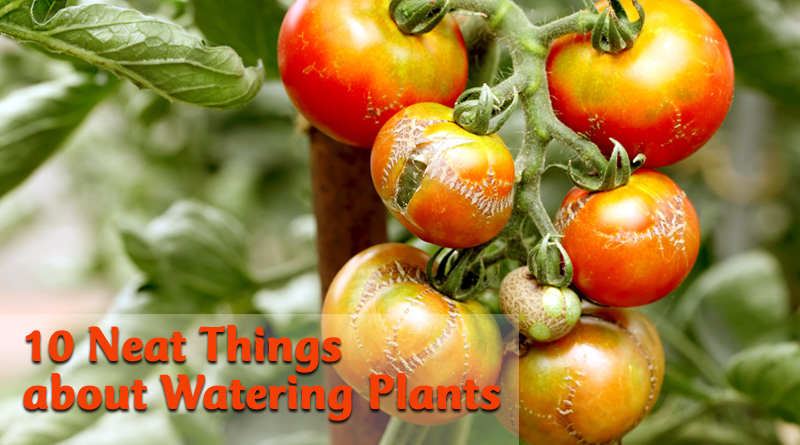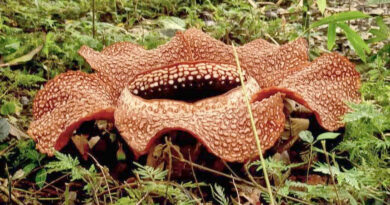About Tomato Troubles
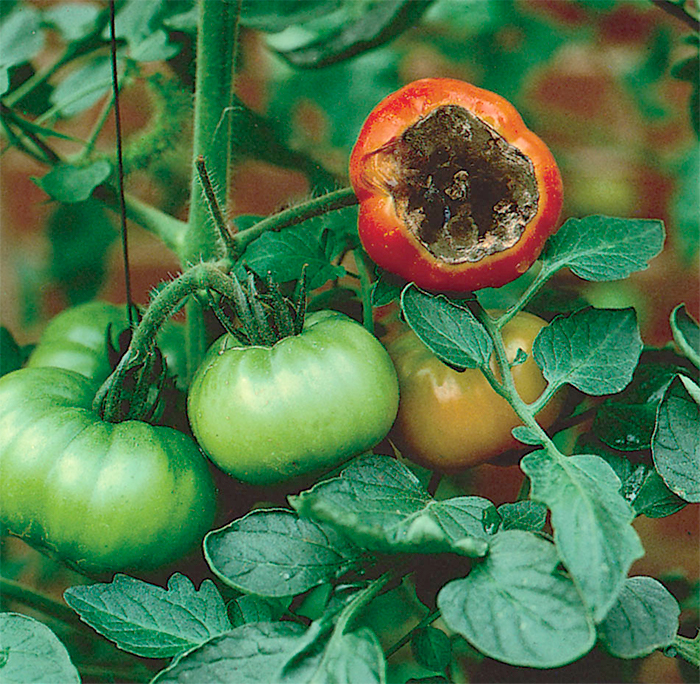
1. Blossom end rot.
This is one tomato trouble that is a source of frustration to many first-time growers! Blossom end rot forms when the tomatoes are almost ripe and it looks like a dark, leathery flat patch on the bottom end of the tomato. If you try to cut off the rot and eat the tomato, you’ll find it mealy. This is caused by too little calcium or uneven watering. You can’t fix tomatoes that have it, but you can try a calcium foliar spray if you still have much growing time this year. Next year, do a soil test before you plant (pH needs to be around 6.5) and keep those babies watered during dry, hot spells.
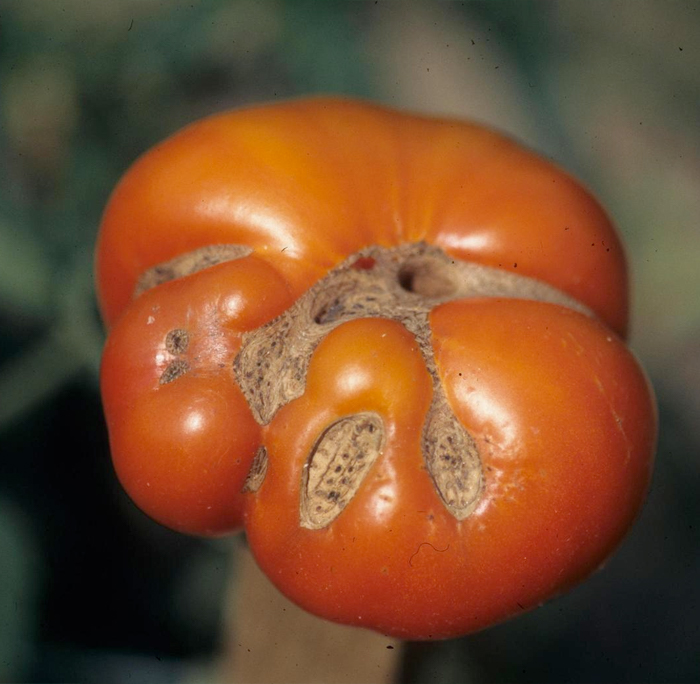
2. Catfacing.
If your tomatoes are deformed and scratched, it means the temperature dropped too low when the blossoms were out. The tomatoes are still good to eat, they’re just ugly. Next year, try protecting your tomatoes with a physical barrier, like a Kosy Coat, when temperatures are going under 16 Celsius for an extended period or on cold nights.

3. Cracking.
Cracking happens when the plant is parched and takes up too much water when it finally rains. While it’s unattractive, the cracking itself isn’t a problem, but sometimes insects will take advantage of it and go inside the fruit. Prevent cracking by watering consistently and evenly next year.

4. Blossom drop.
If the blossoms drop off before they’re pollinated, you can probably blame the weather. Tomatoes need nighttime temperatures of 12 to 24 degrees Celsius when they are in bloom. As well, any temperature over 40 Celsius for more than 4 hours will cause the blooms to abort. For cold weather, use Kosy Coats. For hot weather, keep the tomatoes watered and filter the sunlight that hits them. If you run into an extended hot spell, though, you may not be able to save them.
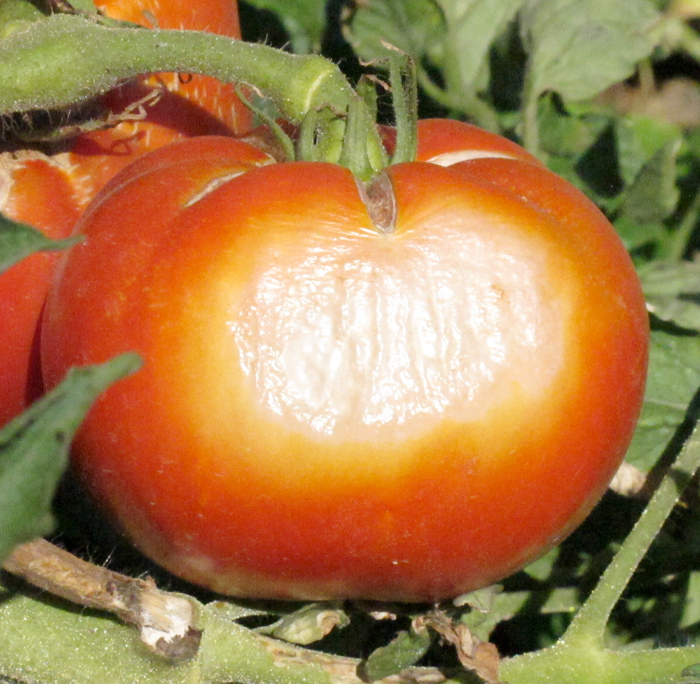
5. Sun scald.
When you get too much sun, you get burned. It’s the same with tomatoes. Sun scald appears on ripening tomatoes as a whitish patch of papery skin. You can offer relief from the scalding sun by blocking it with a sheer material. Plant tomatoes in an area that doesn’t get a full day of sun to prevent this problem.
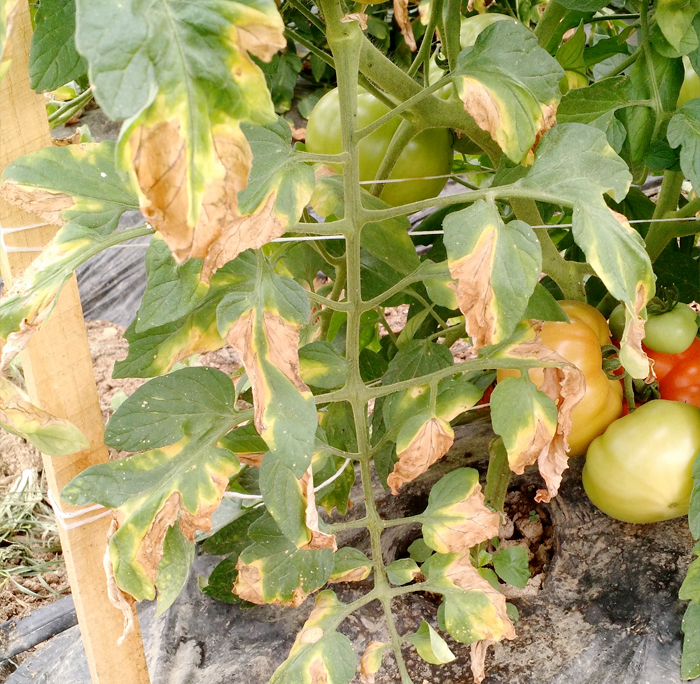
6. Fusarium or verticillium wilt.
If your tomato plants start to wilt and you are certain your plants have been watered adequately (and not too much), be aware that they may have fusarium or verticillium wilt, which is bad news. Both of these fungal diseases are in the soil. Plant your tomatoes elsewhere next year and choose disease-resistant varieties.
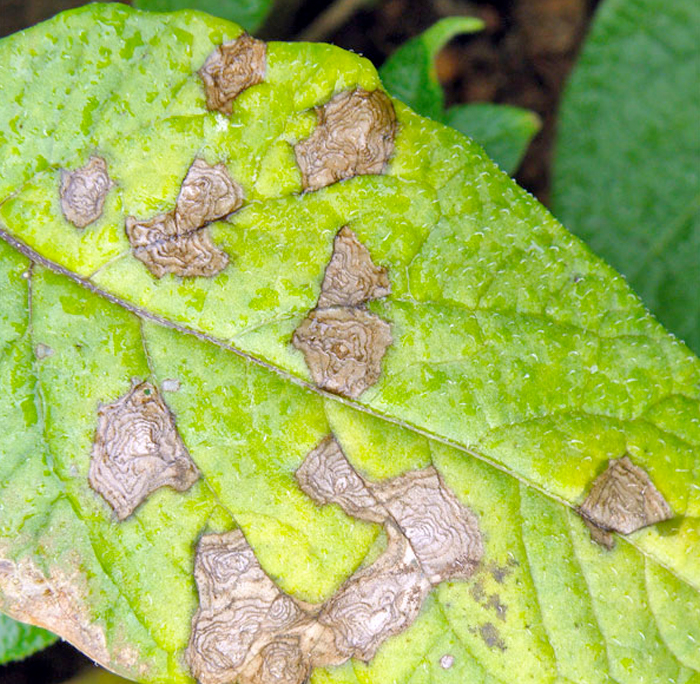
7. Early blight.
This fungal disease is controllable and won’t kill your tomato crop. It appears as brown spots on lower leaves which grow into concentric rings surrounded by a yellow area. Cut off diseased leaves and consider treating healthy leaves with a fungicide. Be vigilant to keep plants otherwise healthy.
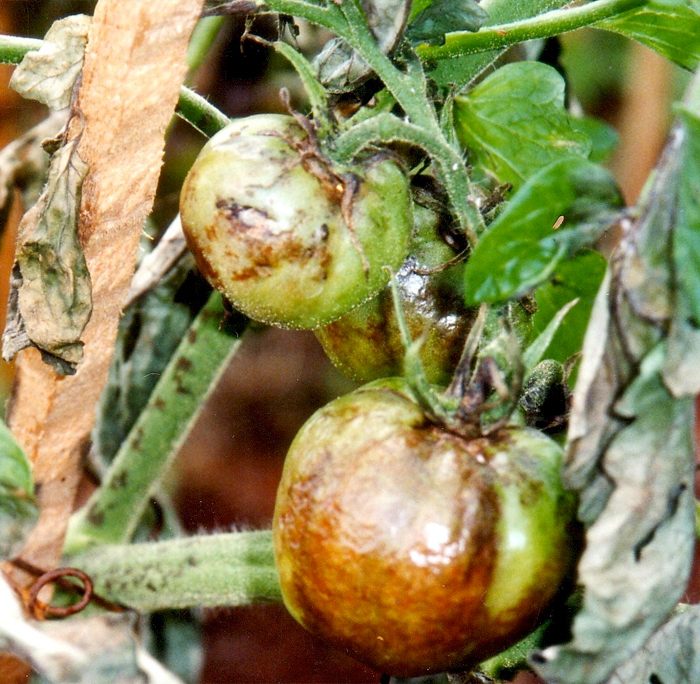
8. Late blight.
Phytophthora infestans is responsible for this fungal disease and it is aptly named: “phytophthora” means “plant destroyer”. It appears as dark lesions on stems and petioles. It progresses to include foliage, and the lesions get a fuzzy white growth. The fruit will rot from one spot. This fungal disease arrives on the wind. Destroy plants carefully to prevent spreading the disease further.

9. Septoria leaf spot.
Another tomato trouble caused by fungal disease, this one causes small brown spots on leaves that grow to ¼ inch in diameter, though sometimes the spots coalesce. Tear off the badly infected leaves and keep your plant in otherwise healthy condition. Consider spraying with fungicides. You can still get tomatoes from the plant.
10. Tomato hygiene.
These are just a few of the more common tomato troubles. Many of them can be prevented by cleaning up tomato debris in the fall, rotating your crops, watering deeply (two inches) once per week and watering the soil, not the leaves. Don’t touch tomato plants when they are wet from rain. Examine plants and stay on top of any problems. And know what you’re dealing with before you act; it would be a shame to rip out plants you assume have late blight when they just have leaf spot.

